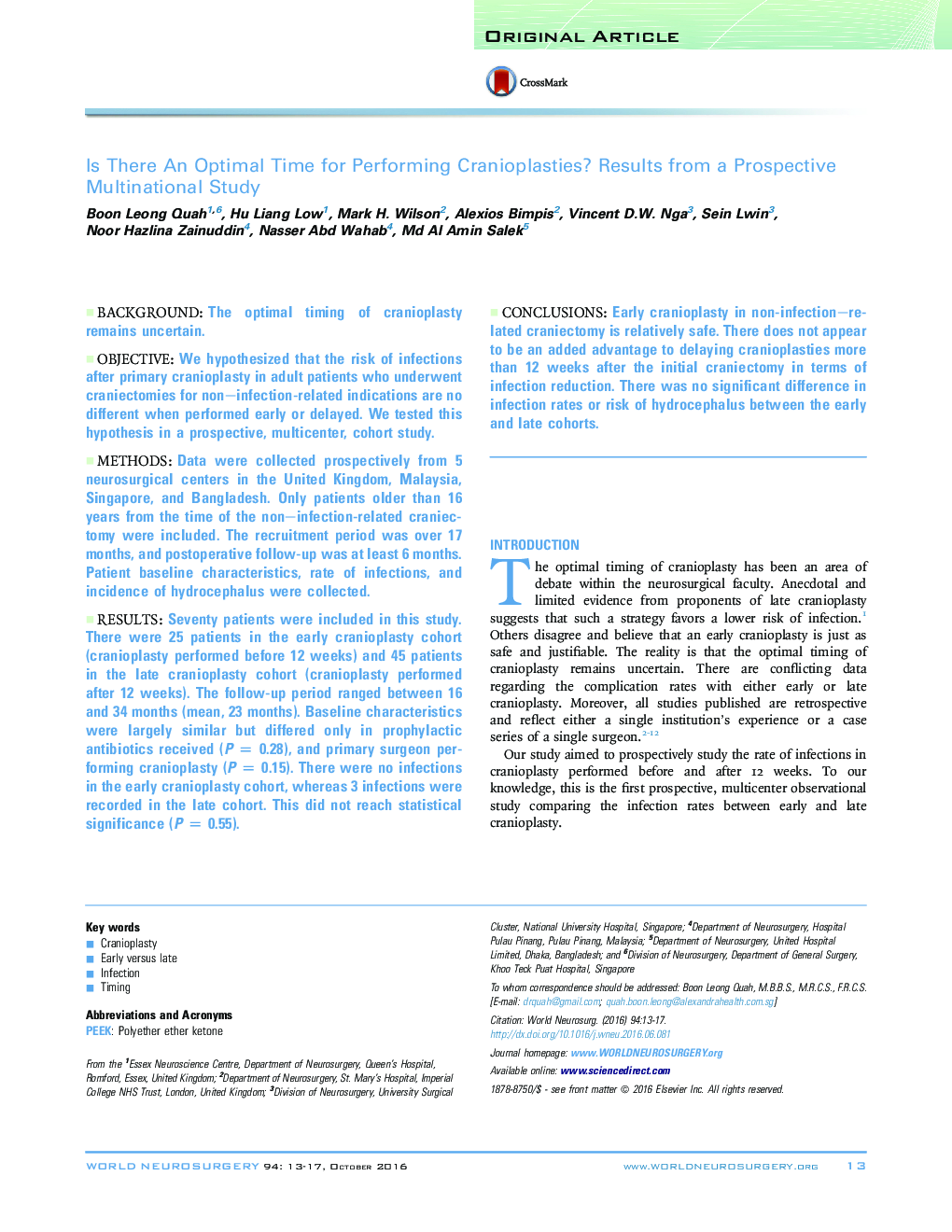| Article ID | Journal | Published Year | Pages | File Type |
|---|---|---|---|---|
| 3094583 | World Neurosurgery | 2016 | 5 Pages |
BackgroundThe optimal timing of cranioplasty remains uncertain.ObjectiveWe hypothesized that the risk of infections after primary cranioplasty in adult patients who underwent craniectomies for non–infection-related indications are no different when performed early or delayed. We tested this hypothesis in a prospective, multicenter, cohort study.MethodsData were collected prospectively from 5 neurosurgical centers in the United Kingdom, Malaysia, Singapore, and Bangladesh. Only patients older than 16 years from the time of the non–infection-related craniectomy were included. The recruitment period was over 17 months, and postoperative follow-up was at least 6 months. Patient baseline characteristics, rate of infections, and incidence of hydrocephalus were collected.ResultsSeventy patients were included in this study. There were 25 patients in the early cranioplasty cohort (cranioplasty performed before 12 weeks) and 45 patients in the late cranioplasty cohort (cranioplasty performed after 12 weeks). The follow-up period ranged between 16 and 34 months (mean, 23 months). Baseline characteristics were largely similar but differed only in prophylactic antibiotics received (P = 0.28), and primary surgeon performing cranioplasty (P = 0.15). There were no infections in the early cranioplasty cohort, whereas 3 infections were recorded in the late cohort. This did not reach statistical significance (P = 0.55).ConclusionsEarly cranioplasty in non-infection–related craniectomy is relatively safe. There does not appear to be an added advantage to delaying cranioplasties more than 12 weeks after the initial craniectomy in terms of infection reduction. There was no significant difference in infection rates or risk of hydrocephalus between the early and late cohorts.
